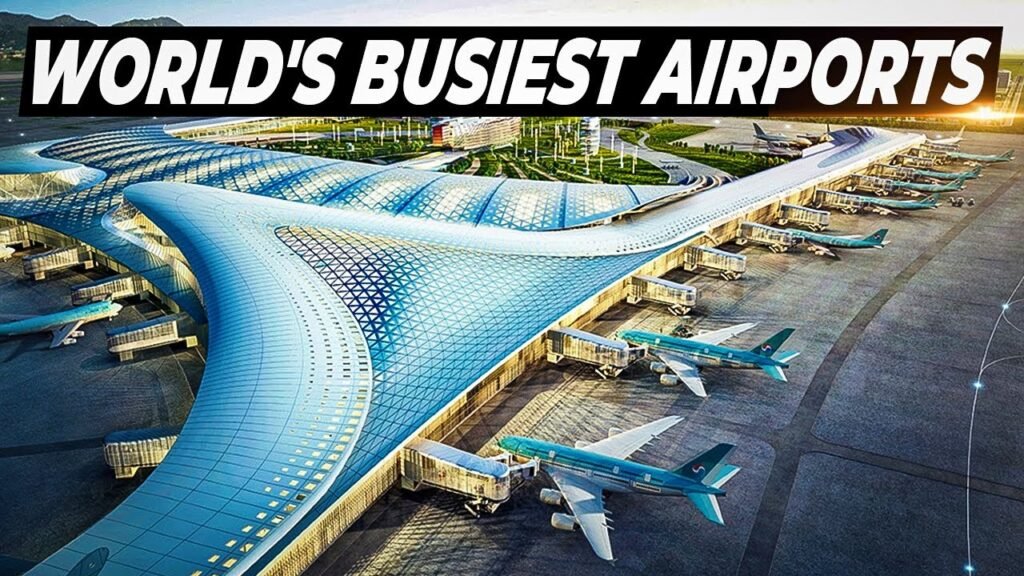Air travel has become an indispensable part of modern life, connecting people and places across the globe with speed and efficiency previously unimaginable. At the heart of this vast network are the busiest airports in the world, colossal hubs of activity that serve as gateways to continents, countries, and cities. These airports are not just points of departure and arrival but complex ecosystems that support millions of jobs, drive economic growth, and facilitate global trade and tourism. In this comprehensive guide, we will explore the fascinating world of the busiest airports, examining their roles, challenges, and the unique features that make them stand out.
The Titans of Global Air Travel
To understand the scale and significance of the busiest airports, it’s essential to look at the metrics that define them. Passenger traffic, measured in millions of passengers per year, is the most common yardstick. However, cargo volume, number of flight operations (takeoffs and landings), and the physical size of the airport also play crucial roles in determining an airport’s status and capacity.
1. Hartsfield-Jackson Atlanta International Airport (ATL)
For many years, ATL has reigned as the undisputed champion of airport busyness, a title earned through its strategic location as a primary hub for domestic and international flights in the United States. Its design facilitates a high volume of flight operations, efficiently handling over 100 million passengers annually. The airport’s success lies in its dual parallel runway system, which minimizes taxiing time and maximizes takeoff and landing efficiency.
2. Beijing Capital International Airport (PEK)
As the main international gateway to China’s capital, PEK has experienced rapid growth in passenger traffic, reflecting China’s economic rise and increased global connectivity. Its Terminal 3, designed by the renowned architect Zaha Hadid, is among the largest airport terminals in the world, equipped to handle the surge in travelers and solidify Beijing’s place on the global stage.
3. Dubai International Airport (DXB)
DXB stands out not just for its passenger numbers but for its role as a critical node in the global air travel network, connecting the East and West. Its Terminal 3 is the world’s largest building by floor space, and the airport is home to Emirates, the largest airline by international passenger traffic. DXB’s growth has been fueled by Dubai’s emergence as a global business and tourism destination, making it a crossroads for international travelers.
The Economic and Social Impact of Airports
Beyond their primary function of facilitating air travel, the world’s busiest airports are pivotal economic engines. They directly contribute to the economy through employment, with thousands of jobs spanning airline operations, airport security, retail, and hospitality. Indirectly, they support a wide range of industries, including tourism, logistics, and manufacturing, by connecting markets and enabling the rapid movement of people and goods.
Airports also play a vital social role by bridging cultural and geographical divides. They are venues where diverse international communities interact, fostering mutual understanding and cultural exchange. Moreover, in times of crisis, airports become crucial infrastructure for delivering aid and facilitating evacuations, underscoring their importance beyond commercial and economic contributions.
Challenges Facing the Busiest Airports
Managing an airport that sees tens of millions of passengers each year is no small feat. These airports face a myriad of challenges, from ensuring passenger safety and security to minimizing environmental impact. Congestion is a constant issue, with air traffic control managing a delicate balance to keep flights moving smoothly while ensuring safety. Noise pollution and carbon emissions are also significant concerns, prompting airports to invest in sustainable practices and technologies.
Another major challenge is the need for continuous expansion and modernization to accommodate growing passenger numbers and larger aircraft. This requires significant investment and planning, often complicated by space constraints and the need for minimal disruption to ongoing operations.
Innovations and the Future
In response to these challenges, the busiest airports in the world are at the forefront of innovation in the aviation industry. From advanced automation and robotics in baggage handling and passenger processing to the adoption of sustainable technologies like electric ground vehicles and solar power, airports are pioneering new solutions to improve efficiency, enhance security, and reduce environmental impact.
Looking ahead, the future of these airports is likely to be shaped by further technological advancements. Biometrics for identity verification, artificial intelligence for personalized passenger experiences, and even the potential integration of air taxis and other forms of urban air mobility could redefine what it means to travel through the world’s busiest airports.
Conclusion
The busiest airports in the world are more than just transit points; they are vital cogs in the machinery of global connectivity, driving economic growth, and fostering cultural exchange. As they navigate the challenges of the 21st century, these airports will continue to evolve, adopting new technologies and practices to ensure they remain at the forefront of global air travel. For travelers, the giants of air travel offer a glimpse into the future, showcasing what is possible when innovation, ambition, and the relentless pursuit of efficiency come together in the service of connecting the world.
Frequently Asked Questions (FAQs)
What makes an airport the “busiest”?
The term “busiest” can refer to several metrics, including the number of passengers handled annually, the volume of cargo traffic, or the number of flight operations (takeoffs and landings). Most commonly, it refers to passenger traffic.
Which airport is currently the busiest in the world by passenger numbers?
As of my last update, Hartsfield-Jackson Atlanta International Airport (ATL) in the USA has consistently been ranked as the busiest airport in the world by passenger numbers, handling over 100 million passengers annually.
How do airports handle the environmental impact of their operations?
Airports adopt various strategies to mitigate environmental impact, such as using renewable energy sources, implementing more efficient waste management practices, electrifying ground support equipment, and designing greener buildings. Some airports also invest in carbon offsetting programs to balance out their carbon emissions.

